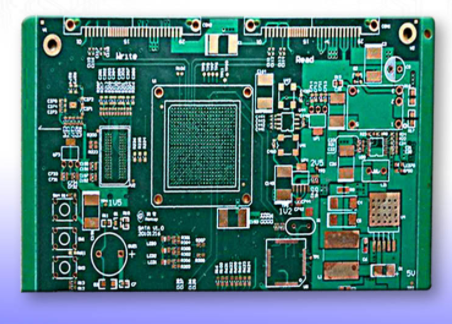Common PCB circuit board short circuit types and inspection methods
Short circuit board is a very common problem in the production of circuit board. There are generally two situations when a short circuit occurs. One is that the PCB circuit board has reached a certain service life. The second situation is that the inspection work in the production of PCB circuit boards is not in place. But these small mistakes in PCB production may cause components to burn out, which is very harmful to the entire PCB circuit board, and it is likely to cause scrap. Therefore, it is extremely important to inspect and control it during the production process. So what are the common types of circuit board short circuits? What are the points that we need to pay attention to in the circuit board short circuit inspection in PCB circuit board production?
1. Common types of short circuit boards
1. Short circuit can be divided into:
Welding short circuit (such as: tin connection), PCB short circuit (such as: residual copper, hole bias, etc.), device short circuit, assembly short circuit, ESD/EOS breakdown, circuit board inner layer micro short circuit, electrochemical short circuit (such as chemical residue, Electromigration), short circuit caused by other reasons.
2. The short circuit can be classified according to the wiring characteristics as: line-to-line short-circuit, line-to-surface (layer) short-circuit, and face-to-face (layer-to-layer) short circuit.

Two, the circuit board short circuit inspection needs to pay attention to these points
1. Open the PCB board design drawing on the computer, light up the short-circuited network, and see where is the closest, the easiest to connect to. Pay special attention to the short circuit inside the IC.
2. If it is manual welding, develop a good habit:
1. Before soldering, check the PCB board visually, and use a multimeter to check whether the key circuits (especially the power supply and the ground) are short-circuited.
2. Every time a chip is soldered, use a multimeter to check whether the power supply and ground are short-circuited.
3. Don't throw the soldering iron randomly when soldering. If you throw the solder onto the solder feet of the chip (especially surface mount components), it will not be easy to find.
3. A short circuit is found. Take a board to cut the line (especially suitable for single/double-layer boards). After the line is cut, each part of the functional block is energized and eliminated step by step.
4. Use a short-circuit location analysis instrument. Common ones are: Singapore PROTEQ CB2000 short-circuit tracker, Hong Kong Lingzhi Technology QT50 short-circuit tracker, British POLAR ToneOhm950 multi-layer circuit short-circuit detector, etc.
5. Check by increasing the current: use low-voltage and high-current, below 5V, and 3--5A high current. Under normal circumstances, the heating position is a short circuit. However, this has a lower risk and is generally not used.
6. If there is a BGA chip, since all the solder joints are covered by the chip and cannot be seen, and it is a multi-layer board (above 4 layers), it is best to separate the power supply of each chip during the design, using magnetic beads or 0 ohms Resistor connection, so that when there is a short circuit between the power supply and the ground, the magnetic bead detection is disconnected, and it is easy to locate a certain chip. Because the welding of BGA is very difficult, if it is not automatically welded by the machine, a little carelessness will short-circuit the adjacent power supply and the ground two solder balls.
7. Be careful when welding small-size surface-mount capacitors, especially the power supply filter capacitors (103 or 104), which are large in number, which can easily cause a short circuit between the power supply and the ground. Of course, sometimes with bad luck, the capacitor itself is short-circuited, so the best way is to test the capacitor before welding.